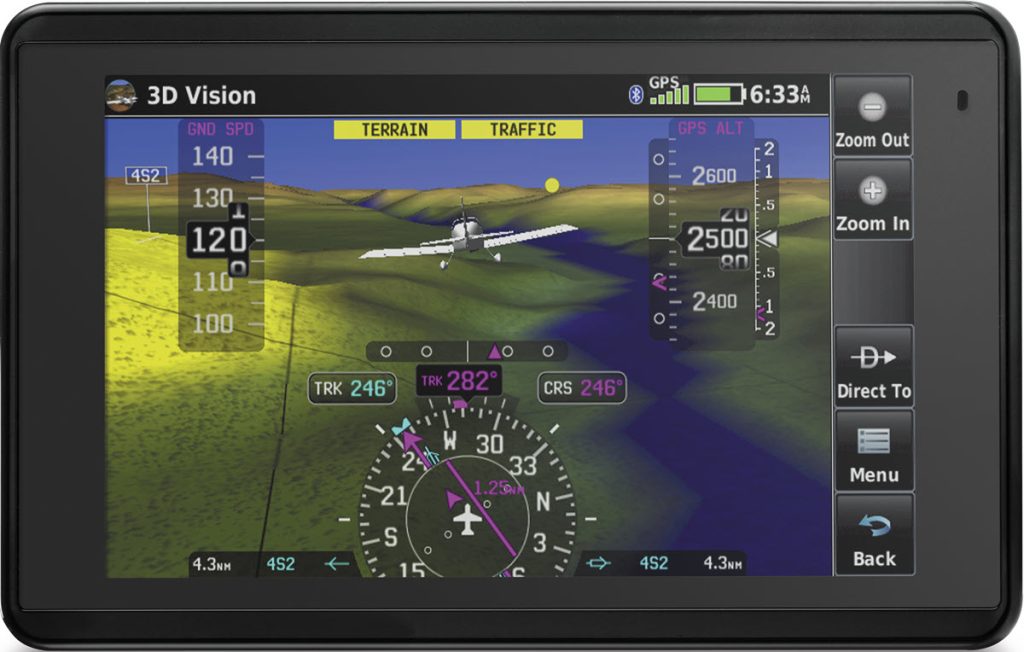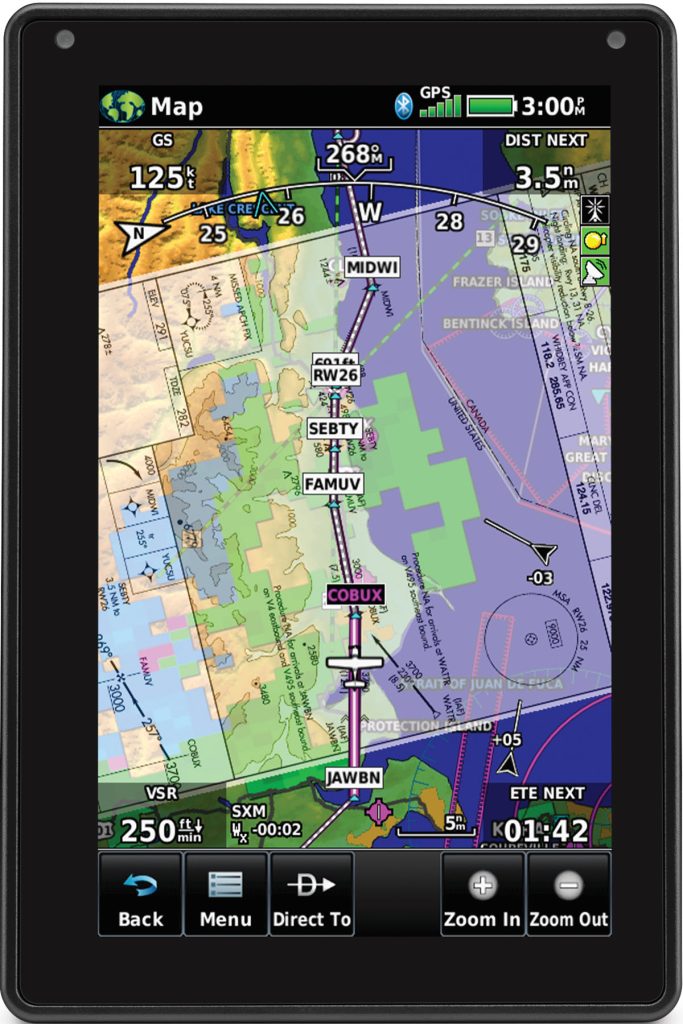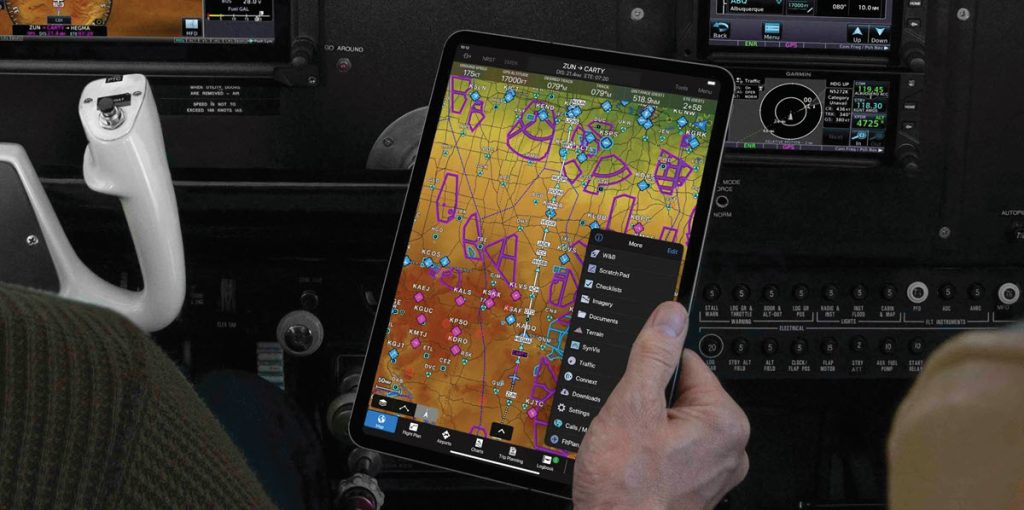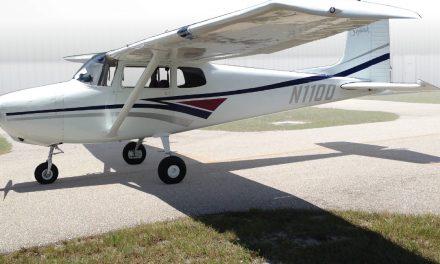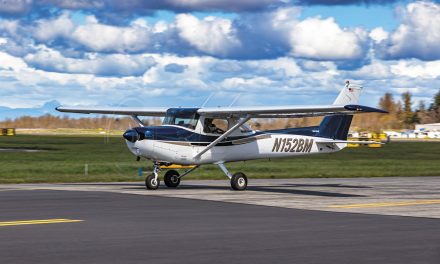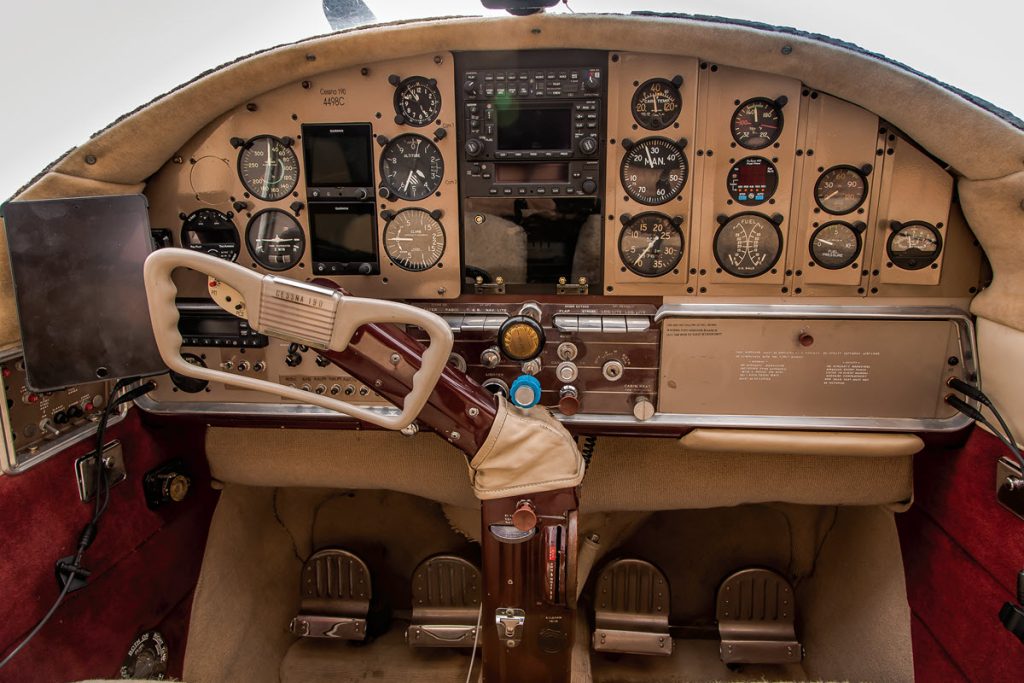
There was a day when, if you wanted to augment your certified navigation equipment and add a moving map to the panel, your option was a portable GPS.
Garmin launched the concept in 1993 with the Garmin Model 95 handheld GPS. It could tell you where you were, but the simple map required your imagination to determine where you were visually. From 1993 to 2011 (the heyday of the portable GPS), Garmin introduced 18 more GPS models for aviation, each one with better features, and the units themselves got bigger, responding to the shouts from legacy pilots for bigger displays.
I was on the front lines of avionics sales, and I heard the calls. Other manufacturers like Lowrance (from the marine side) and AVMAP entered the market and competed, establishing “size” as a major factor in choosing a portable GPS.
Today, only Garmin and iFLY have survived and still offer new portable GPS models. What changed? Well, it took two companies to create an alternative to the portable GPS. Apple’s iPad added an option in portable computing that could actually fit in the aircraft cockpit, and companies like ForeFlight came along with aviation software that went beyond anything a portable GPS could do, and their software was upgradable.
Portable GPS units couldn’t compete, and the size issue was put to bed. Bigger and more is better. A bigger, better-quality display is better, and the enhanced information available in aviation software took portable navigation from a VFR tool to a serious backup tool for the IFR pilot. Even Garmin responded. Their new aera 760 is configured more like a tablet PC than a portable GPS.
We will take a brief look at the few portables still available today, but the choice to use aviation software options for the iPad, and now Android devices vs. a portable GPS is the right way to go, in my book. Frankly, I would not be surprised to see the end of portable GPSs for aviation.
Aviation Portable GPS in 2022
Garmin offers the aera 660 ($749 retail) and the newer aera 760 ($1,499). Both are large-screen portables. The 660 offers a 5-inch diagonal display, which is large by yesterday’s standards, and the 760 has a 7-inch display, which is consistent with the iPad Mini 4, which, from my simple research, is the most popular size found in aircraft cockpits. Both accept ADS-B data wirelessly and have lots of features for the VFR or IFR pilot, with the 760 more focused on the latter. Both offer synthetic vision.
IFLY appears to be the only competitor to Garmin in the portable market and offers the 740b Moving Map GPS ($599). The 740b has the lowest price portable GPS and offers a 7-inch diagonal display. Note that display technology today is significantly improved over the earlier LCD displays, and both Garmin and iFLY have great screens. IFLY says theirs is better. The 740b offers synthetic vision and 3D traffic and wireless ADS-B data.
The rest of this article can be seen only by paid members who are logged in.Have a website login already? Log in and start reading now.
Never created a website login before? Find your Customer Number (it’s on your mailing label) and register here.
JOIN HERE
Still have questions? Contact us here.

